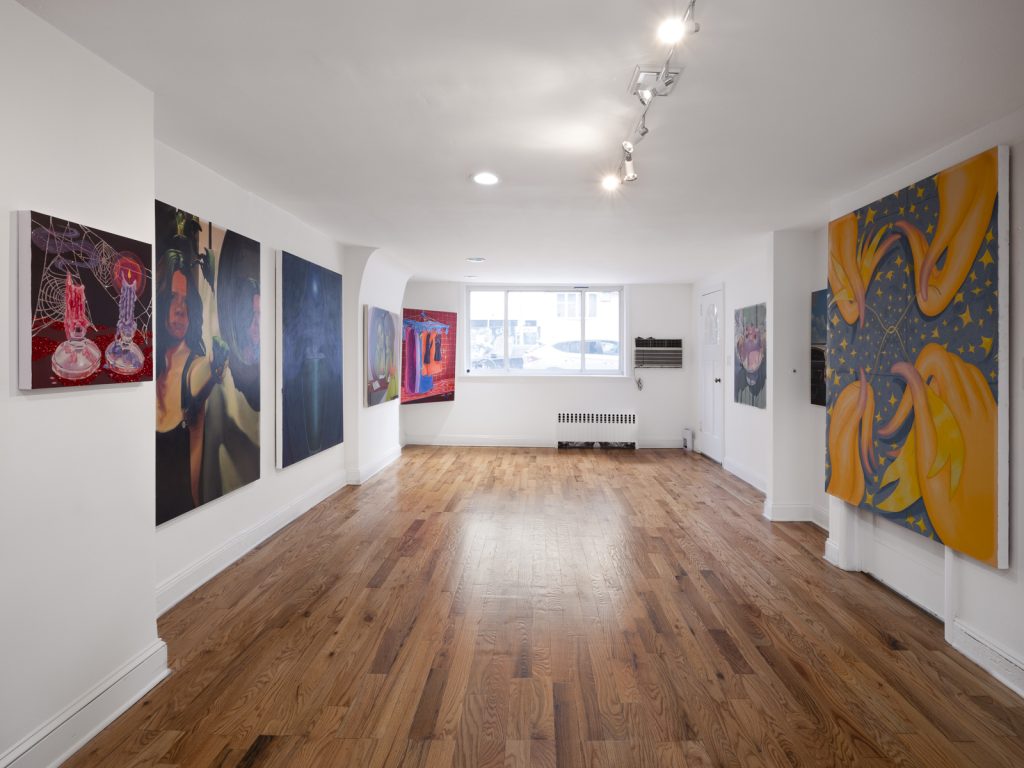Radouan Zeghidour’s HYPOGEA at Catinca Tabacaru Gallery
A young Parisian artist’s vision of ephemeral art in hidden locations

One would fear, when putting an artist who has become known for temporary works in extraordinary, secret places within the walls of a gallery, that the magic would be lost. Fortunately, this isn’t the case with Radouan Zeghidour‘s “HYPOGEA” at Catinca Tabacaru Gallery—for a few reasons. The young Parisian artist has made a name for himself over the last few years because of his temporary pop-up art creations in illicit spaces and because of the artistry in his documentation of it all. As very few people themselves have actually witnessed his works in catacombs and abandoned warehouses, much of what remains—and stands as the lasting art—is the documentation. Curator (and writer and artist, herself) Marie Salomé Peyronnel was well aware of this when inviting Zeghidour for this show, his first solo exhibition in NYC. And it dictates the experience that unfolds within.

“HYPOGEA,” meaning underground, has been built around the memory of Zeghidour’s mesmerizing installation “Désenchantement” (2015), wherein the artist constructed an ephemeral sculpture from wood, wax and wool beneath La Maison Rouge museum in Paris. “HYPOGEA” features six works, all of which pertain to “Désenchantement” in some way. There is an aluminum box of relics, two debris painting solidified in wax, and a documentary video playing on repeat. An aluminum “tombstone” sculpture with acid writing denotes the end of the death of “Désenchantement.” And rounding it all out, “HYPOGEA” includes a large-scale, hand-drawn access map known as “Mea Culpa” that begs guests to explore where Zeghidour’s piece once stood. This striking piece features stories detailing his adventure. In essence, this is a fully-formed art show built around the mythos of an art experience that will never exist again.

“What is interesting about the access map, ‘Mea Culpa,’ is that it allows people to live an experience, not only to see an artwork,” Zeghidour explains to CH. “Since my work is primarily made of experiences, explorations and feelings, it seems the best way to share it now. No images can transcribe the tension, fear and wonder undergone when trespassing,” he continues. The art within “HYPOGEA” aims to translate these emotions. More than relics or testaments, they’re personal exposition with their own visually-stunning backbone.

“Once the installation is done it’s not mine anymore. It belongs to the location,” he says. Zeghidour does not disclose the locations of his temporary pieces until well-after they’ve been documented and disassembled. This makes his gallery exhibitions even more important. There is access here to the unknown, clues to his interests and a grasp of his style. As for inspiration, however, he concludes with the importance of space: “I am scouting locations on a daily basis.”
“HYPOGEA” is on at Catinca Tabacaru Gallery (250 Broome Street, New York) now through 15 May.
Images courtesy of Radouan Zeghidour











